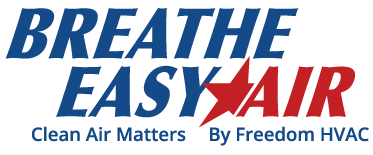The Clean Air Act
The Clean Air Act was initially voted into existence in 1970 as a result of a collaboration between the Environmental Protection Agency and the US Congress. Revisions later came in 1977 and 1990. At that time in our nation’s history there were two things happening that caused the need for the Clean Air Act. Smog was a growing problem as transportation and manufacturing struggled with the need to manufacture while also respecting our natural resources. The environmental movement began at this time as an expression of concern over pollution of the air, water, and our bodies.
The Clean Air Act has undergone revisions that included legislation regarding acid rain and damage to the ozone layer of our atmosphere. These revisions brought significant changes in manufacturing standards for HVAC and air quality.
One of the stated goals of the Clean Air Act is to establish national ambient air quality standards for pollutants. These pollutants include particulate matter, ozone, sulfur dioxide, nitrogen dioxide, carbon monoxide, and lead. At the state level, they are required to establish plans and laws that enforce this goal. This legislation also seeks to limit the pollutants coming from a growing number of motor vehicles and an increasing number of manufacturing plants around the country.
It would be accurate to state that the Clean Air Act has four primary areas of concern.
-
Toxic air pollution that poses health risks such as cancer and the accumulation of heavy metals.
-
Depletion of the ozone which protects us from excessive solar radiation.
-
Acid rain that destroys oceanic life, damages soil, and acidifies forest soils.
-
Haze that limits visibility in national parks and recreational areas.
For an expansive and detailed, plain description of what is in the Clean Air Act, navigate to https://www.epa.gov/clean-air-act-overview/plain-english-guide-clean-air-act. There is a PDF located there entitled The Plain English Guide to the Clean Air Act.
Environmental Protection Agency
The EPA plays a major role in the creation of the language entered into the Clean Air Act. It sets limits on air pollutants coming from chemical plants, utility companies, and producers of steel. The EPA is the final stop for approval when states and companies submit plans for the reduction of pollution. Essentially, the EPA has the authority to step in if states are not reducing or enforcing sections of the act. Sanctions may be issued against states, municipalities, governments and manufacturers who do not comply with acceptable reduction standards. The EPA seeks to assist states and other players to understand its requirements by providing research, engineering designs, funding, and studies.
Fluorocarbons
Fluorocarbons are a class of compounds produced by substituting fluorine for hydrogen in a hydrocarbon. It is highly stable and remains constant. It is used in lubricants, fire extinguishers, industrial applications, and refrigerant.
Chemists divide these fluorocarbons into three different kinds. They are as follows:
Chloro Fluoro Carbon(CFC). This chemical contains chlorine and demonstrates characteristics than can deplete the ozone. It was originally placed in refrigerants, blowing, solvent, and aerosol propellants. This chemical was banned for use by 1995.
Hydro Chloro Fluoro Carbon(HCFC). This chemical contains chlorine and hydrogen. It is also used in refrigerants, blowing, solvent, and aerosol propellants. It is on its way to being abolished for use.
Hydro Fluoro Carbon(HFC).This chemical does not contain chlorine and is not effective in eliminating ozone. It is used in refrigerants, refrigeration equipment, mobile air-conditioning, room air-conditioners, and other HVAC unit types. It is also a blowing agent, solvent, and an aerosol propellant.
So, just to make sure…CFCs are banned. HCFCs are on their way to being banned. HFCs are still being used.
Indoor Air Quality (IAQ)
This is a term referring to the air quality inside a structure. This feature can be impacted by environment, location, and gases in the air. IAQ can be determined by the combining of data collected from computer modeling of air flow, the collection of samples taken from buildings, monitoring exposure to pollutants, and the collection of air samples.
The HVAC industry is concerned with how heating and air conditioning units impact the quality of air inside homes and buildings. The goal is not to just cool or heat the air. Air must be changed inside structures to maintain adequate air flow and reduce the accumulation of contaminants inside. This air must also be at the most effective humidity levels for the occupants and adjusted according to the local atmosphere.
In the final analysis, the Clean Air Act has resulted in a better atmosphere which has ultimately led to a better indoor air quality for Americans.
